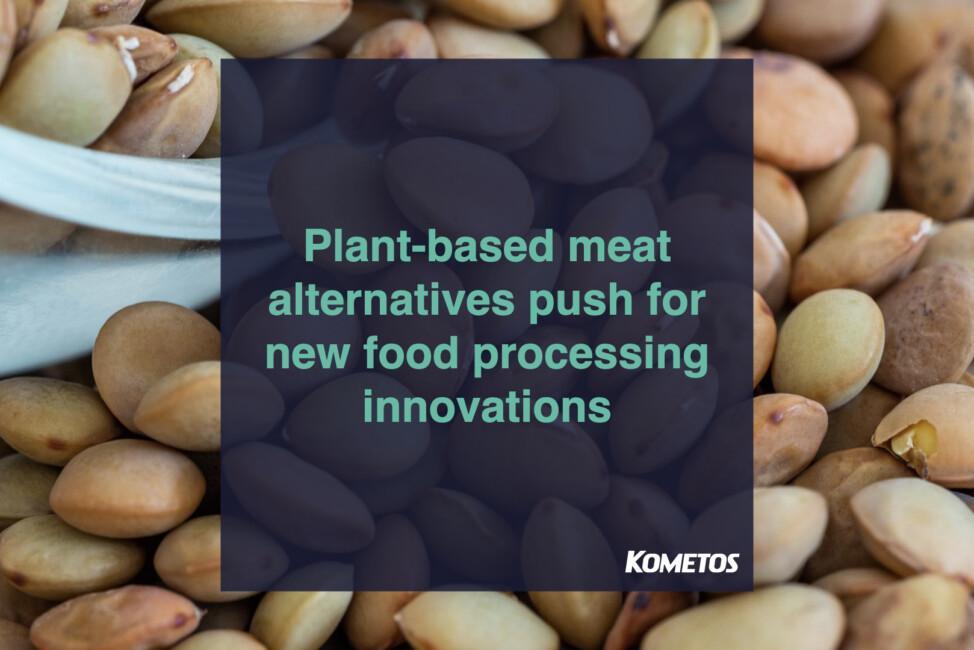
Emerging trends and precision in plant-based meat production processes
The global paradigm of dietary choices is undergoing a transformative shift, with increasing interest in plant-based meat alternatives. This article explores the trends shaping the plant-based meat industry and its manufacturing processes.
Trends in plant-based meat alternatives
A shift towards conscious choices
Embracing plant-based meat alternatives reflects a conscientious shift in dietary choices. As consumers become more aware of the environmental and health impacts of traditional meat production, there is a growing demand for sustainable plant-based options.
Interest in a more flexible diet is gaining traction; this doesn’t mean abandoning meat entirely, but instead incorporating more plant-based protein sources into one’s diet.
Ingredient innovation
The plant-based meat industry is witnessing an exploration of innovative ingredients. From soy and peas to oats and mycoprotein, companies are pushing boundaries to create textures and flavors that rival traditional meat products.
Diverse product offerings
Plant-based meat products are becoming more and more diverse, ranging from burgers to sausages, “chicken” nuggets, and “meatballs”. This expanding variety caters to a broad spectrum of tastes, paving the way for plant-based alternatives to the plates of even the most ardent carnivores.
Challenges in plant-based meat production
The growth of plant-based meat alternatives brings about new opportunities for manufacturers but also some challenges, particularly in scaling production equipment to meet demand. Existing equipment and processes designed for traditional meat production may not be always suitable for plant-based alternatives, requiring adaptation and innovation.
– Specialized equipment: Plant-based meat production may require specialized equipment. However, such equipment isn’t always readily available or optimized for large-scale production, necessitating collaboration with suppliers to develop tailored solutions.
– Scalability: Scaling up production capacity presents a challenge, as existing equipment and processes may not easily accommodate increased demand for plant-based products.
– Integration: Integrating new equipment into existing production lines can be complex and time-consuming. Manufacturers need to carefully plan and execute equipment upgrades or installations to minimize disruptions and ensure seamless operation.
The good news is that the food processing industry is quick to catch on. Industry pioneers, such as Kometos, continuously innovate and develop new solutions, whether it’s precise weighing, solid or liquid dosing, tray handling, bag filling, or any other step of the process. Most of Kometos’ tray handling and dosing equipment is suitable for plant-based meat products and traditional meat alike.

Plant-based meat production processes: From raw materials to the frozen foods aisle
Plant-based meat alternatives come in various shapes and forms, requiring a lot of innovation and adaptability from the production processes.
Strategic raw material selection
The journey of plant-based meat begins with meticulous raw material selection. Staple ingredients like soybeans, peas, and grains are chosen for their protein richness and potential in mimicking the texture of traditional meat.
Focused protein extraction
Unleashing the prowess of protein extraction, the chosen raw materials undergo a transformation where protein content is isolated and intensified. This critical step creates a robust foundation for plant-based meat products.
Crafting texture and flavor excellence
Manufacturers employ innovative techniques to craft the perfect texture and flavor profile, ensuring plant-based alternatives closely replicate the sensory experience of conventional meat.
Precision in forming products
The final production step involves shaping and forming the plant-based concoction into familiar meaty delights. Utilizing cutting-edge molding equipment, manufacturers create burgers, sausages, and nuggets – to name a few examples.
Innovative dosing and packaging processes
And finally, after creating the end product, it still needs to be dosed and packaged. Kometos’ Finntray dosing and packaging lines are well-suited for plant-based meat alternatives.
Controlled freezing and thawing to extend shelf life
Just like with meat, in the production of plant-based foods, freezing and thawing are critical steps. Kometos’ freezing and thawing equipment ensures that plant-based products retain their quality, taste, and texture.
In conclusion
As the plant-based meat industry continues to evolve, driven by consumer demand and culinary innovation, production lines are being adapted to keep up with the trends.
With decades of experience in the food industry, Kometos is constantly innovating to create new solutions for the ever-evolving food industry.
💡 Want to learn more about Kometos’ solutions for plant-based products? Get in touch with our team.




